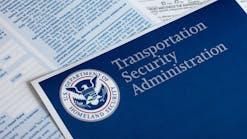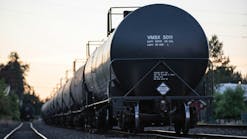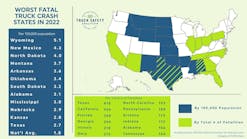When product hits the dirt, hit the ground running with these critical steps from Heniff’s veteran safety director
INDUSTRY veteran Ray Riley, the safety director at Heniff Transportation Systems, shared his thoughts and observations on spill response in a lively presentation entitled “Responding to a Spill: Reporting, Cleanup, Costs and Other Issues” during NTTC’s 2019 Safety & Security Council Meeting.
Riley addressed what he said is a deadly serious issue. Every aspect of responding to a spill must be considered, from pre-determined response plans to key notifications, cleanup and everything in between, including picking an emergency response contractor like Emergency Response and Training Solutions (ERTS), which was represented by Amanda Stevens, ERTS executive vice-president.
First response
When a company has an unintentional release of product, the driver should immediately report the incident to their home terminal, Riley said. The company needs to know what is going on as quickly as possible to mount a timely and proper response, and hopefully get ahead of any authorities. Riley advises establishing reporting procedures, including who reports to whom, and practicing them.
It’s important to remember that reports likely will need to be made to local, state and federal agencies, so define who in the organization has those responsibilities, and don’t forget the Environmental Protection Agency (EPA), along with the customer, shipper, broker and anyone else affected.
And for incidents involving certain hazardous materials, Pipeline and Hazardous Materials Safety Administration (PHMSA) regulations stipulate the National Response Center (NRC) must receive notification “as soon as practical but no later than 12 hours after the occurrence” by telephone, at 800-424-8802 or 202-267-2675, or online at nrc.uscg.mil.
“My experience has been a lot of them want you to report through CHEMTREC,” Riley said. “Others say, ‘Yes, that’s where you start, and then you call me,’ and you should have their numbers.”
If a carrier is uncertain who to call, check the shipping documents for a phone number, Riley said. Then take the steps to commence cleanup as soon as possible because regardless of who put the product on the ground or who owns it, the carrier will be held responsible by insurers and enforcement.
“With that responsibility on you, you want to take some control,” Riley said. “You want to try to control the cost, control the negative impact on your company, and in ways you’re also controlling the negative impact on the industry.”
Response policy
At Miller, Riley said they developed a company response policy that defined roles and responsibilities, identified response team leaders, provided contact information, established governmental emergency notification numbers and requirements, and recorded the locations and types of the company’s trailers and specialized equipment.
Everything needs to be in writing, so policy is spelled out and clearly understood. Types of responses are key, too, because a milk spill might seem minor, but if it gets on someone, the incident is elevated to exposure, possible injury—think allergies—and if the product reaches a waterway or kills anything, including plant or animal life—yes, milk can kill fish—liability escalates.
And remember, spills aren’t always convenient, but timely response is always critical.
“We had a spill of lard one time,” Riley said. “Delivering to a facility, they left the tank valve open, our driver did some things he wasn’t supposed to, and it’s going out across the field in a ditch. So I called the (quality director), told him about it, and I was told, ‘Ray Riley, if you let that crap get to that stream, I’m going to skin you alive,’ because that would have made him get out of bed and come out there on Thanksgiving Day.”
Every product should be addressed in the response policy, not only hazardous chemicals, because almost everything tank truck carriers transport comes in a concentrated, and therefore potent, form.
When defining responsibilities, make sure more than one person is trained to take control and coordinate activities in an emergency. Assign roles, like locating equipment and other critical tasks, to other personnel, and make sure to review policy regularly because rules and key information change.
“When you have something happening is not the time to say, ‘Oh, who do I call?’” Riley said.
At Miller, Riley said they were able to train all terminal managers and shop foremen to a 40-hour technician
level primarily through helping state and other agencies—often by providing a chemical tank for training or helping with a spill for which they weren’t responsible—who in turn helped Miller.
Maintaining control
It’s impossible to maintain a list of every useful contractor in the country, but it’s vital to have a good idea who can help nearby, because the quicker they reach a spill, the better, so develop relationships and stay in touch.
“I suggest that in areas where you have terminals, where you have high-traffic areas, identify a couple of those local emergency-response contractors, because that’s the difference between losing the entire load or losing a fourth of it,” Riley said. “It could also be the difference between a $2 million cleanup and a $500,000 cleanup.”
Keeping informed and up to date on government emergency notification numbers is critical, too, Riley said, and for more reasons than one. He relayed a story about a recently fired and fully disgruntled employee who threatened to open a valve if he saw one of Miller’s tanks on the road, so, after much internal discussion, Miller called the FBI, asked if they were interested, and the FBI said yes.
Miller hauls hazardous material, and the driver did some of that hauling, which immediately piqued the FBI’s interest, so company officials provided a statement, then asked if they would hear anything else about the case. The FBI told them no, Riley said, but they planned on sending an officer to the driver’s door to ask about the threat, and inform him of potential legal repercussions.
Most of the time, the FBI maintained, that’s enough to set a person straight.
“Take those threats seriously,” Riley said. “You never know when you’re going to have the one guy or gal who does that, so be careful.”
Every state—and often the counties within each state—holds different reporting requirements, so know the local rules and expectations, Riley said. For example, in Louisiana, where the chemical hauling work is plenty and the reporting requirements are plenty thorough, if a company releases hazardous or any other material in the state, they better follow through on notification.
There is no penalty for over-reporting, but underreporting could be costly.
Ray’s rule for Louisiana: “If it gets out of the damn tank, call them, regardless.”
ERTS can help
ERTS provides 24/7/365 emergency spill response management nationwide to the transportation, oil and gas, chemical, manufacturing, and insurance industries with no exclusive contracts, annual fees or sign-up fees. The company offers a “complete turnkey service” managing an entire incident, including emergency response, remediation, regulatory reporting, waste disposal and site closure.
Stevens emphasized the importance of reporting to every agency, because if a waterway exposure is reported to the state but not the NRC, the carrier could be in trouble. NRC also has a requirement for notifying the agency of any reportable-quantity releases with 15 minutes of discovery.
“So you have your protocols in place, and you have a spill that’s occurred, all the steps that you have to take, and you have a reportable-quantity release in the state of Louisiana, not only are you going to have to get that contractor dispatched, you’re going to have to make five phone calls within a 60-minute period to different regulatory agencies to have that notification process done,” Stevens said.
Closure requirements are tricky from a regulatory standpoint in some states. In New Jersey and North Carolina, only a licensed site professional can file a site closure report when a release impacts soil.
It’s also critical to thoroughly vet contractors, including checking for Occupational Safety and Health Administration (OSHA) reportable incidents, and any fatalities that may have occurred on their watch, and ensuring their capabilities, including equipment and hours of operation, meet specific needs.
Stevens also advised considering contractors’ response times, insurance requirements and on-scene communication standards.
“Who’s going to be the one communicating back?” Steven said. “What communication protocol do you have in place with your contractors? Are they going to notify you if media is on scene, if regulatory reporting agencies are on scene? What if you have a federal incident commander? How are you going to be getting notification from your contractor to know about what’s happening on the scene and what that communication process looks like? Those are things that you want to set up ahead of time.”
Think long-term when it comes to risk and responsibility, Stevens said. Some states require sampling to prove everything is back to normal, but even in states that don’t, it might be a good idea to include sampling in a response plan to ensure no future liability risk is associated with a particular site.
And when it comes to waste disposal, make sure product is disposed of correctly, and carefully verify and document.
“The last thing anybody wants is for a drum of their waste to end up in a warehouse, the contractor goes bankrupt and that drum sits there with a hundred other drums,” Stevens said. “If they can only identify your drum, you are responsible for the entire Superfund site. That’s an extreme amount of liability.”
Visit ertsonline.com for more information.














